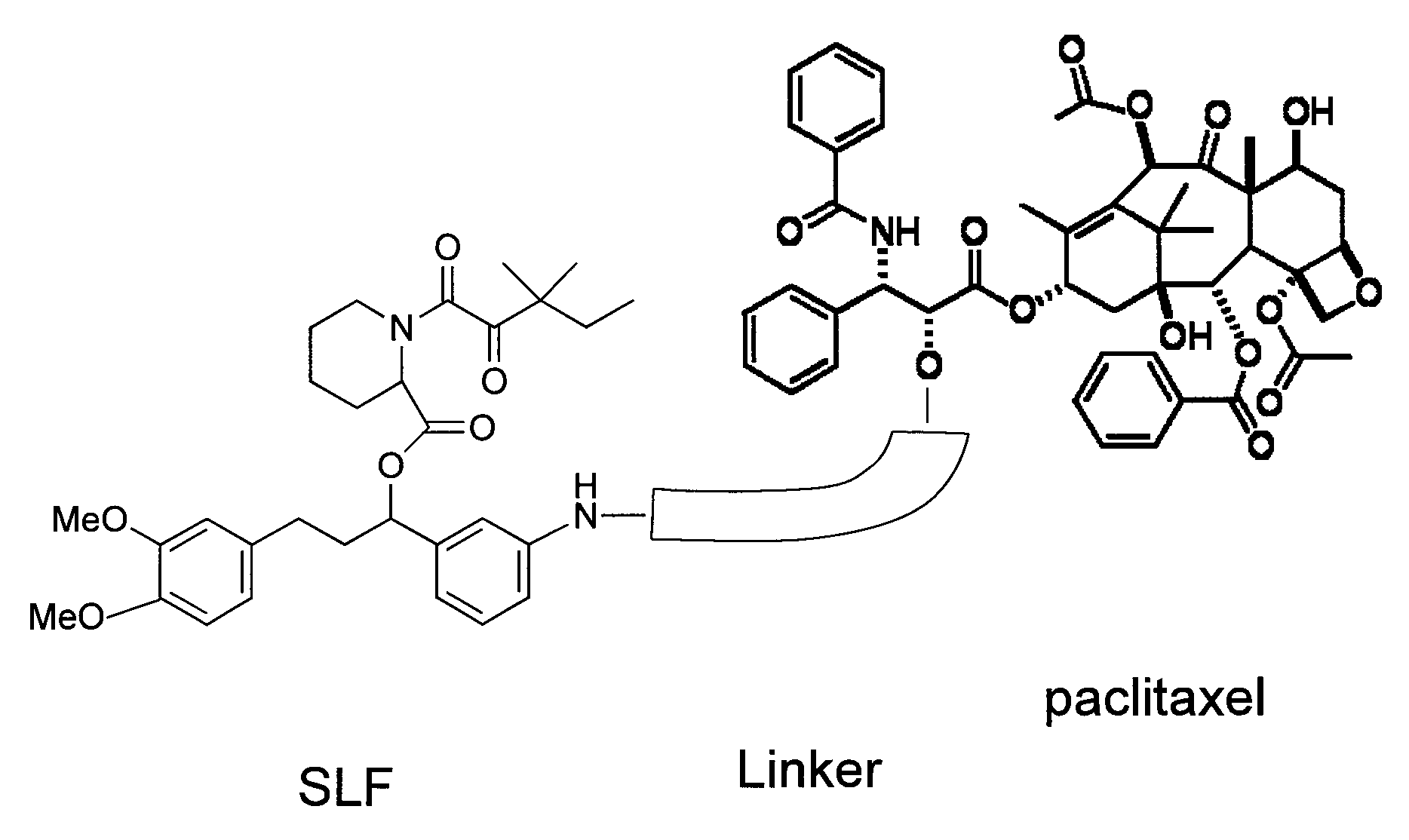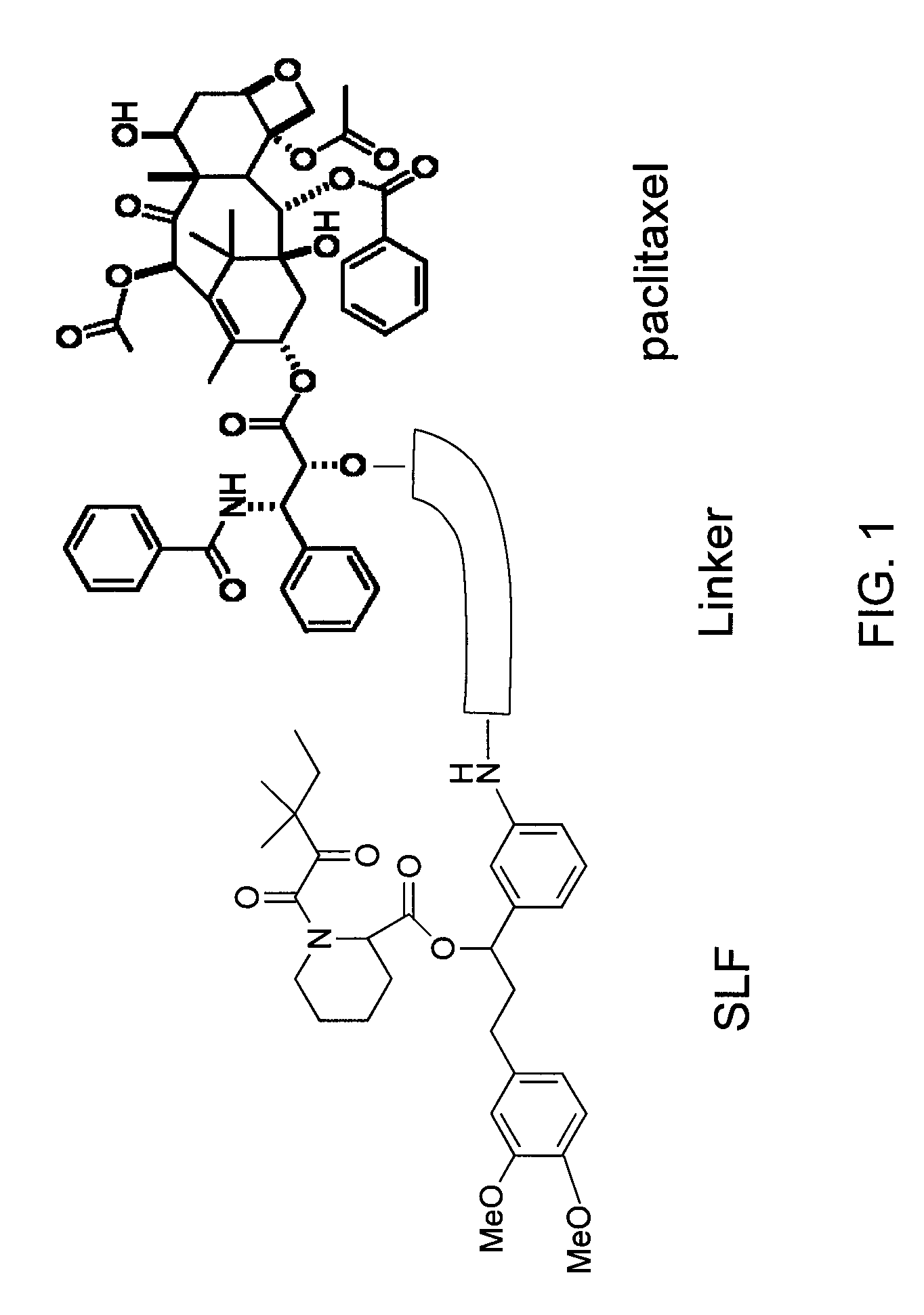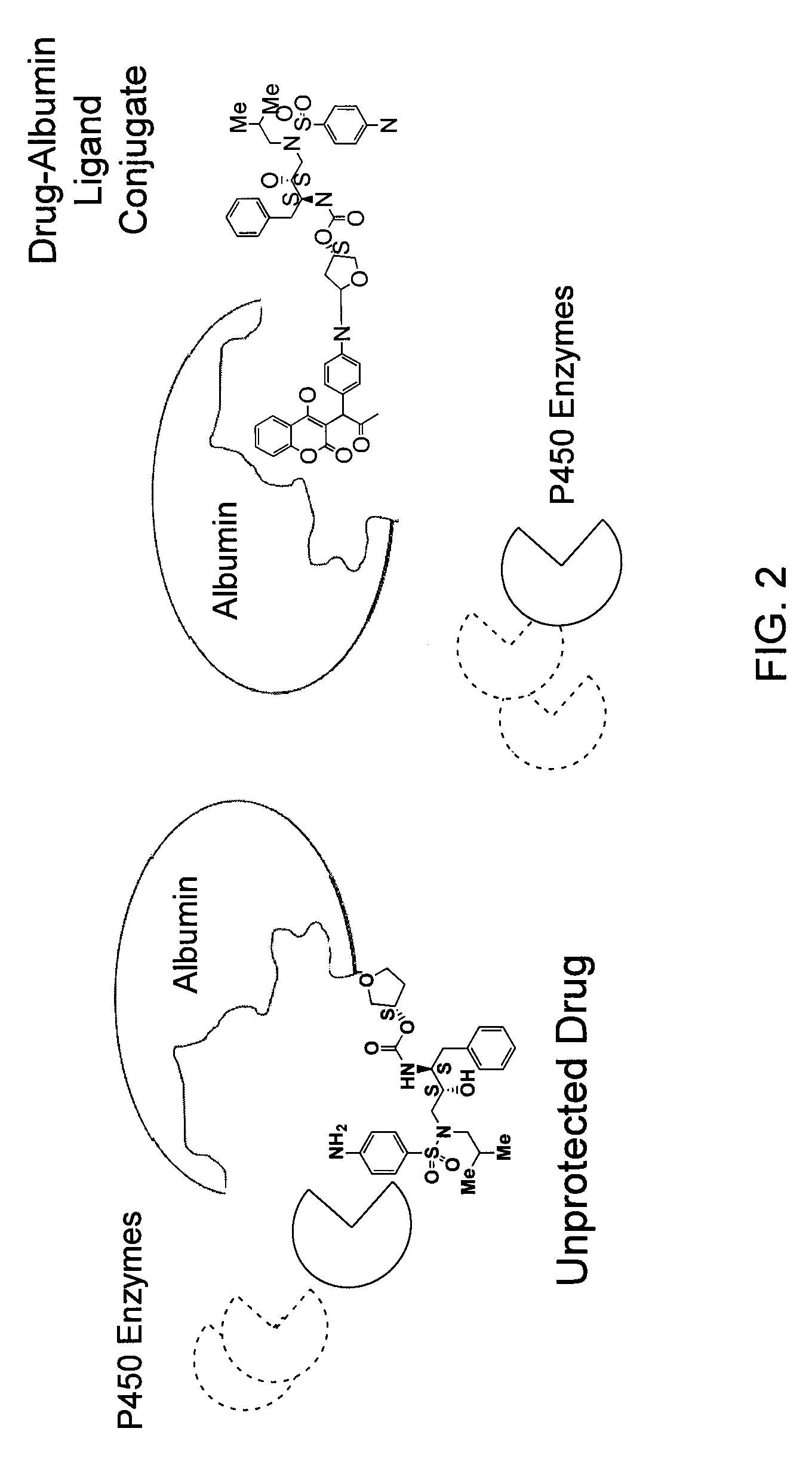Pharmacokinetics and Efficacy of Anti-Angiogenic Drugs and Drugs Treating Diseases of the Blood
a technology applied in the field of pharmacokinetics and efficacy of angiogenesis and drug therapy, can solve the problems of patient compliance and drug toxicity, paclitaxel does not exhibit optimal retention in blood cells, and paclitaxel does not exhibit toxic side effects, so as to improve pk, improve efficacy and efficacy, and improve the effect of pk
- Summary
- Abstract
- Description
- Claims
- Application Information
AI Technical Summary
Benefits of technology
Problems solved by technology
Method used
Image
Examples
example 1
FKBP Protection of Curcumin Conjugates
[0102]An amyloid ligand, curcumin, is known to be a good substrate for CYP3a4 (a common P450 enzyme). We investigated whether conjugates between curcumin and FK506 would also be substrates for the enzyme. To test this possibility, we utilized a well-known fluorescence-based CYP3a4 assay. This assay, marketed by Invitrogen (Carlsbad, Calif.), under the name VIVID probes, relies on cytochrome-mediated production of a fluorescent marker from a model substrate. When a compound, such as curcumin, binds to the P450, it displaces the substrate and reduces the rate of production of the fluorescent product. When we tested curcumin-FK506 conjugates in this assay, we found that both curcumin and the conjugate were good substrates for the enzyme. Thus, attachment of FK506 did not appear to significantly alter curcumin's susceptibility to degradation by CYP3a4. However, when we supplied a source of human FKBP (in this case, recombinant bacterially-expressed ...
example 2
Synthesis of Conjugate of FK506 and Anti-Angionenic Agent
[0103]The linkers shown in FIG. 5 may be coupled to FK506 or SLF via EDC-mediated amide formation followed by deprotection of the newly installed carboxylate. This acid is then used for conjugation to an anti-angiogenic moiety-based molecule as shown in FIG. 6. The linker can be readily altered to enhance solubility or other physical characteristics of the bifunctional compound. The linker must cross cell membranes in the context of the bifunctional molecule. In one preferred embodiment, the linker must permit simultaneous binding of the pharmacokinetic modulating moiety and drug moiety by the bifunctional.
examples 3-4
Synthesis of Paclitaxel-SLF Conjugates
[0104]The syntheses of additional paclitaxel-SLF conjugate may proceed in a fashion generally similar to that employed for the FK506-based molecule, as shown in FIG. 6. Linker choice can be important since it can effect compound solubility, transport from the small intestine into the circulation, equilibrium between target and non-target protein binding, efflux via the p-glycoprotein pump, and intra- vs. extracellular distribution.
PUM
| Property | Measurement | Unit |
|---|---|---|
| Fraction | aaaaa | aaaaa |
| Mass | aaaaa | aaaaa |
| Mass | aaaaa | aaaaa |
Abstract
Description
Claims
Application Information
 Login to View More
Login to View More - R&D
- Intellectual Property
- Life Sciences
- Materials
- Tech Scout
- Unparalleled Data Quality
- Higher Quality Content
- 60% Fewer Hallucinations
Browse by: Latest US Patents, China's latest patents, Technical Efficacy Thesaurus, Application Domain, Technology Topic, Popular Technical Reports.
© 2025 PatSnap. All rights reserved.Legal|Privacy policy|Modern Slavery Act Transparency Statement|Sitemap|About US| Contact US: help@patsnap.com



